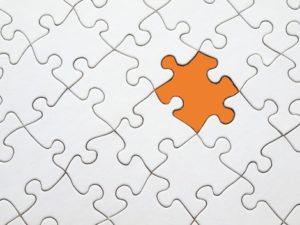Selecting the right equipment to add to your fleet for construction or maintenance operations can seem daunting, but it’s an important task to undertake. If the equipment isn’t replaced when its service life is over or when new technology demonstrates better efficiencies, it can negatively affect your ability to get the job done and needlessly eat into capital and maintenance budgets.
We’ve prepared this guide to help you navigate the road to choosing new or replacement equipment. We devote the bulk of our time here to exploring the key questions and concepts you need to consider, before finishing with a look at why partnering with the right supplier really matters.
Questions to Ask Yourself When Selecting Heavy Equipment Solutions

1. What are the Costs Involved?
A major part of any equipment purchase decision is the price—but the capital acquisition cost is only one factor, in combination with ownership, operation, and maintenance costs. Although many organizations only focus on capital costs, it makes more and more sense to consider a lifecycle approach with your cost analysis.
Capital Costs
 Put simply, the capital cost is the initial purchase cost of the equipment you’re buying. On average, the capital cost makes up roughly 50 percent of the total cost you will incur in owning a piece of machinery over the course of its life.
Put simply, the capital cost is the initial purchase cost of the equipment you’re buying. On average, the capital cost makes up roughly 50 percent of the total cost you will incur in owning a piece of machinery over the course of its life.
In addition to the base price of the machine itself, other capital costs might include:
- Taxes and their effect on possible cash flow.
- Shipping, transportation, and setup expenses. Are these costs clearly explained or included?
- Fees for additional modifications or extras. Are extra costs hidden within an operating expense versus capital expense?
Make sure you read and carefully explore whether a proposal or quote covers everything you are expecting to get, and that nothing is back-ended that you were unaware of. Assumptions are dangerous and can lead to issues that may be difficult to resolve after delivery.
Ownership Costs
These are the costs that you incur on an annual basis even if you’re not actively using your equipment. They are made up of expenditures on items like storage, insurance, licensing, and interest on finance payments.
Operation Costs
These include any costs associated with the ongoing operation of the equipment, which are typically the price of fuel and operator time. These expenses are only accrued when the machine is actually being operated and will vary depending on use.
Maintenance Costs
The third type of costs you need to factor into your decision-making processes are those associated with ongoing maintenance. These are crucial, because regardless of the purchase price you pay at the outset, regular upkeep and repair is where you will find yourself devoting a substantial portion of your budget over your machine’s lifetime.
Maintenance costs include things such as:
- Consumables, the items or goods you need to keep your equipment in good operating condition and that will be consumed within the course of its operation. These include products like lubricants.
- Special items like wear parts (e.g. plow and grader blades). You will usually monitor and keep track of these separately from more typical consumables like hoses and filters.
- Servicing, the costs of any labour and parts that go into keeping equipment in good working order.
Remember that maintenance costs tend to rise as machines age. Staying up-to-date with routine inspections and scheduled maintenance plays a critical role in helping your equipment last longer and perform better.
All of these factors combined need to be considered against the expected lifecycle of the machine, and must be compared against viable alternatives. A higher capital cost machine may in fact cost less to operate and last much longer, which is why a total lifecycle analysis must be conducted.
Keep in mind that, if you are involved with procurement in the public sector, an analysis and purchase process that is based solely on machine specs and a purchase price can be erroneous to expected lifetime costs. Instead, craft a procedure in which both the supplier and the buyer request a quoted and locked-in price, with discussion and evaluation possible to examine a total lifecycle ownership decision.
2. What Support Is Provided?

Depending on your needs, support might include parts, service, and possible loaners. You should ensure that both parts and service help will be available and convenient for any required maintenance or repairs in the future. Be sure to find out whether the support offered is local—can the provider fix your machine onsite in a reasonable timeframe, or will your machinery need to be shipped away while it’s being worked on?
3. What Role Does the Equipment Play in Your Business?
It’s important to take a look at the big picture from 30,000 feet above when considering how a new piece of equipment will fit into your business over the short and long term. Is the equipment intended to fulfill your current needs or anticipate future ones? How will the new machinery impact your labour costs and skills available? Even if a new machine requires operator training or even new or additional personnel, it could boost your productivity and reduce expenditures in the long run.
Another factor to think about is the significance of the machinery to your business. Your answers to these questions will help determine the best option for acquiring the equipment:
- Can you afford downtime? Should you buy new, reconditioned, or used?
- Are you a subcontractor for someone else who relies on you and this equipment?
- Is it for you own use, giving you more flexibility?
- What does acquisition say to the market? Are you in business for the long run?
- What size of model should you get? You can often do a smaller job with a bigger machine but not vice versa. A larger machine, although carrying a higher purchase price, often means higher productivity and lower operating costs.
Based on your responses, you can decide whether it makes the most sense to consider new or used. For example, if you really can’t afford downtime, consider new or rented equipment so that you don’t have to worry about the responsibility of maintenance or repairs. On the other hand, if the piece of machinery is absolutely critical to your company on a long term basis, it may make the most sense to consider ownership of a new unit rather than used—after all, the best hour a machine will ever have is its first.
4. What Are the Financial Options for Acquiring the Equipment?
There are a number of financial factors to be considered when acquiring new machinery. One of the first things you need to reflect on is whether you should buy or rent.
Buying

One of the biggest challenges with buying equipment can be the initial capital outlay required, which is significantly higher than it would be with leasing or renting. This where financing and leasing may be available either through the seller or third party financing companies. Interest, taxation, and cash flow considerations should all be examined when structuring a purchase. Remember that the initial purchase cost is only about 50 percent of its lifecycle costs!
When it comes to buying, there’s one more question you need to consider—will you buy new or used?
Here are some points to consider for each option:
| New | Used | |
| Pros | · Easily keep pace with the most current industry developments and technological changes.
· Maximize productivity and keep your competitive edge. · The resale or trade value will be higher than for a used machine. · Gives a strong statement to the market and competitors that you are here for the long haul. · A manufacturers’ warranty is usually available. · Financing is more readily available for new equipment. |
· Buying used is a good way to save money, especially if it’s gently used and well maintained.
· Used machines are more likely to be time-tested solutions that have a proven track record of success. · Some suppliers guarantee a thorough inspection and product support for their used equipment. · You may know the used piece well if you buy from someone you know. |
| Cons | · There are higher initial costs to buy new equipment.
· New machinery often requires more training than older, familiar equipment. · New equipment depreciates in value faster after the initial purchase. · New equipment may require outside support for upkeep and maintenance. |
· Support isn’t always included when you buy second-hand.
· Older equipment may be outdated and reduce your productivity. · The equipment may not be in good shape—make sure to work with a reputable supplier to avoid any surprises. · Financing is more difficult for used equipment. |
Leasing
Leasing is a specialised discussion in itself when acquisition is desired:
- It may involve less money upfront since down payments aren’t necessary, which frees up more cash for you to work with.
- The lessor can be responsible for maintenance depending on the terms of your lease. Capital leases usually treat you, the lessee, as the owner (meaning you’re responsible for maintenance and upkeep), while operating leases can keep ownership and maintenance responsibilities with the lessor.
- Leases can make it easier to upgrade to new models on a more regular basis.
- Timeframes can be relatively flexible (usually between one and five years), but rates will be more favourable than they would be for an extended rental.
- There are tax implications of leasing versus purchasing, and this is where you should seek sound financial advice on the best means to proceed.
A challenge you might encounter is that interest and insurance rates for leases tend to be higher. If you need to return the equipment and end your lease early, the financial penalties associated with that can also be stiff, and should be fully understood ahead of time.
Renting
Renting can offer a number of advantages depending on the type of equipment you need and your intended use:
- Enhanced Flexibility: Rentals are usually offered on a daily, weekly, or monthly basis, so you can use the equipment for the amount of time that suits you.
- Reduced Maintenance Required: You’ll be free from concerns about in-depth maintenance or repairs, as those costs remain with the owner. Usually routine maintenance is the responsibility of the renter – those things that should be done to ensure proper reliability (e.g. greasing, and even oil changes if long term).
- Simpler Storage: Having a machine in your possession for longer than necessary can create storage-related headaches. Keeping it onsite can tie up valuable physical space, while storing it offsite can be expensive. With rentals, you can worry less about where to keep the equipment when it’s not being used.
- Try Before You Buy: Renting a unit can allow you more time and your personnel a better opportunity (as compared to a short-term demo) to evaluate a machine for purchase or to differentiate between machine options.
One thing to consider is that rental fees over a long term can add up fast, so be sure to choose the right rates and rental period from the outset. If, for example, you need a piece of equipment for three weeks, it might make more sense to pay a monthly fee rather than daily rental fees. Depending on how long you’re going to be using the equipment (for the duration of a season, for example), a short term lease package might also be suitable.
You may find that you will rent for longer than you thought, so consider an upfront purchase option to allow you to acquire the unit for long-term ownership or even to secure your equity so you can buy and resell it yourself.
Remember that rental rates are often twice as much as what ownership costs would be, so you may not expect to make money on the rental. However, it is a more productive means to evaluate a unit or get a specific job done.
Ultimately, your method of acquisition will likely blend a variety of approaches for different equipment considered. Depending on your company’s needs, you might own some core equipment, lease a piece or two that you only need for a couple of seasons or a job, and rent more specialized pieces on an as-needed basis. You can work with your suppliers to determine the arrangement that’s right for you.
5. What Will Be the Resale or Trade Value?
You’ll likely need to sell or trade in your equipment at some point. You might let go of a machine when a project is over and the equipment is no longer needed, when more specialized equipment is required, or when your current model is old and you want the reliability and features of a newer model.
The main factors that affect resale value are the equipment’s brand, condition, and buyer demand.
- Brand: Many buyers are willing to pay more for equipment from a brand they know and trust. You may have a harder time selling a used machine and get a lower resale value from a lesser-known manufacturer.
- Condition: It’s important to maintain equipment in good operating and visual condition to keep its value as high as possible, and to ensure any warranty is upheld. Stick to service timelines and document any maintenance work or repairs in a log so you can demonstrate to a buyer that you have looked after it well. The more buyers know, the better. Consider outside maintenance agreements to offload the upkeep to your supplier experts. This may come with added cost, but you don’t require the labour manpower or specialised knowledge to do this, so there is viable cost trade-off. Only use the equipment as intended and in proper operating conditions. If you are known for pushing the limits, your machines will be looked upon adversely in a resale opportunity.
- Buyer Demand: If there is demand for a particular piece of equipment, the resale value will be higher. Check out the going rates in different areas and considering selling in another region to get the most value for your trade-in or sale.
When you’re looking to replace your equipment, let your supplier know—they might be able to help you sell it.
6. Should You Stick with Traditional or Try Innovative New Equipment?
If you find yourself conflicted between time-tested machinery and innovative, emerging solutions when choosing equipment, you’re not alone. Are you an early-adopter, or a latecomer?
In this case, your decision will be a personal one, based on factors like:
- Perceived advantages of the new technology over old.
- Risk and degree of comfort using new technology (for your business, any superiors, and the operators).
- Training time and adoption required for your operators to learn new equipment.
- Supplier support for new technology – is it proven enough? Can you afford some hiccups? Is it new to them as well?
- Some legislated changes, like engine emission requirements, are locked in stone. Your decision might be to beat the change by buying a remaining piece of old technology while you can still get it, or diving in with new equipment and learning early to get ahead of the curve.
If you’re not ready to try a completely new piece of equipment but still want to take advantage of advances in technology, there are options available. Many traditional machines are now able to incorporate innovative optional components. For example, some machines have added the option of automation, like GPS control, so you can make the shift from analog preparation to digital accuracy. Some of these can be added later, but only if considered up front—so ask about add-ons early in the process.
Choosing the Right Machinery Supplier

Consider things like:
- Years in Business: Find out when the company was established. This will give you peace of mind knowing that the provider has longevity, stability, and experience, and that they have had the time to develop strong relationships with manufacturers.
- Manufacturers: You want to work with someone who partners with the right manufacturers. Assess the machines each company distributes—both the range of what they offer, as well as the strength of individual suppliers.
- Services: When you purchase your road maintenance equipment, you want to know you will be able to maintain it without hassle throughout its lifecycle. Choose a distributor with local or readily available parts inventories and service expertise you need to keep your machine at peak performance.
- Industry Experience: You’ll want to confirm that the company has experience working with customers in your industry and your work type, and that they will be capable of understanding and meeting your needs. References are one way to assess a company’s credibility and experience. Ask the companies you are considering for information about current customers. When did they first become a customer? What types of projects have they worked on? What was the overall experience?
A good supplier should feel more like a conscientious equipment consultant, rather than a sales organization with one end goal. Do they fully understand your needs and offer suggestions? Are they respectful and capable? Are they assisting you, or pushing you? Are they going to be there for you whenever you need them, for whatever cause?
Ultimately, a supplier should provide all the information you need to make an informed selection—whether that means buying from them or not. They should be able to provide useful insights and answers to any questions you may have about the equipment, parts, service, and maintenance, making the decision-making process easy and hassle-free.
Choosing equipment is a big commitment. Take the time to research your options and ask important questions to ensure you get the most out of your equipment throughout its entire lifecycle.
Amaco is Ontario’s heavy equipment specialist and has helped municipalities, contractors, and owner-operators across the province find the right machine solutions for them. Contact us today to discuss your needs!
Read more from Amaco:
- Cold Weather Starting Tips for Your Diesel-Fired Hotboxes
- Avoid Surprises in Your Municipal Heavy Equipment Budgets Next Year (3 Essential Tips You Need to Know)
- 8 Questions To Ask When Buying Used Aggregate Equipment - June 16, 2025
- 5 Key Steps to Choosing the Right Curb Machine for Your Fleet - October 22, 2024
- 5 Tips for Purchasing Used Excavating Equipment in Ontario - September 26, 2024






